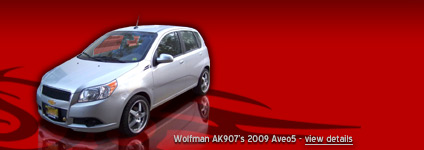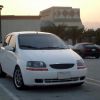I agree.Originally Posted by exodus
Also, for further proof... the engine in formula 1 cars are 2.8L v-8s that push well over 800hp... with no turbo, no supercharger, and on gasoline (not methanol or ethanol). The key is high compression and light weight rotating assembly.
Something to keep in mind is that the flywheel may let the engine accelerate 2x faster, but when you add back the rotating mass of the driveline, you may only see a 20% increase, as opposed to 200%



 LinkBack URL
LinkBack URL About LinkBacks
About LinkBacks
 Reply With Quote
Reply With Quote 2006 Chevrolet Aveo
2006 Chevrolet Aveo

